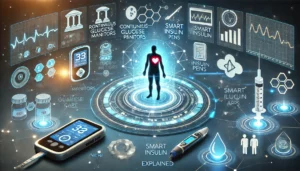alt=”Description of image content” style=”width:650px; height:auto;”/>
“`html
Stem Cell Therapy’s Potential in Treating Type 1 Diabetes Explored
In a groundbreaking leap for medical science, recent research has delved deep into the potential of stem cell therapy as a promising treatment avenue for Type 1 Diabetes (T1D). This chronic autoimmune condition has long perplexed the medical community, leaving patients reliant on lifelong insulin therapy. The possibility of reversing this condition, rather than just managing it, offers hope and excitement to millions worldwide.
Understanding Type 1 Diabetes
Before delving into the transformative implications of the study, it’s crucial to comprehend what Type 1 Diabetes entails. This autoimmune disease attacks and destroys the insulin-producing beta cells in the pancreas, leading to elevated blood glucose levels. Commonly diagnosed in children and young adults, it necessitates strict blood sugar management through insulin injections.
The complications arising from T1D, if unmanaged, can be severe:
- Heart disease
- Nerve damage
- Kidney failure
- Vision problems
The persistent quest for a cure has fueled extensive research and innovation, with stem cell therapy emerging as a beacon of hope.
What Is Stem Cell Therapy?
Stem cell therapy centers around the utilization of undifferentiated cells that have the potential to develop into various specialized cell types within the body. These cells can be directed to repair or replace damaged tissues, making them ideal candidates for regenerative treatments.
There are several types of stem cells utilized in therapies:
- Embryonic stem cells: Derived from early-stage embryos, they are pluripotent and can transform into any cell type.
- Adult stem cells: Found in various tissues, they typically produce cell types of their origin but are multipotent.
- Induced pluripotent stem cells (iPSCs): Adult cells that have been genetically reprogrammed to an embryonic stem-cell-like state.
The prospect of stem cells forming new insulin-producing cells draws significant interest for T1D treatment.
Breakthrough Case Study: Reversing Type 1 Diabetes
A recent case study has surfaced in the medical community, illustrating the potential efficacy of stem cell therapy in tackling Type 1 Diabetes. The study focused on utilizing laboratory-grown stem cells to replenish the insulin-producing beta cells that the immune system had obliterated.
Here’s what the study revealed:
- The patient underwent a series of injections introducing lab-modified stem cells.
- Over time, the patient exhibited a noticeable reduction in insulin requirements.
- There was a regeneration of functional beta cells evident in the patient’s pancreas.
- Blood sugar levels stabilized, negating the need for daily insulin injections in the short term.
While this development doesn’t yet constitute a universal cure, the findings showcase a pivotal advancement toward potentially curing Type 1 Diabetes.
Challenges and Considerations
Despite the promising results, several hurdles remain before stem cell therapy becomes the gold standard treatment for Type 1 Diabetes:
- Stem cell sourcing: Ethical concerns surrounding embryonic stem cells demand alternative sourcing like iPSCs.
- Immune system response: Even newly introduced beta cells are at risk of immune system attack, necessitating strategies to protect them.
- Scalability: Treatment must be scalable and affordable for wider accessibility and adoption.
- Long-term effects: More extensive trials and studies are needed to understand long-term implications and safety.
The Future of Type 1 Diabetes Treatment
The evolution of stem cell research and therapy presents an exciting frontier in diabetes management, and potentially, eradication. This groundbreaking case study offers a vision into a world where Type 1 Diabetes is no longer a life sentence but a condition that can be managed, if not cured.
Research continues to explore:
- Improving transplantation techniques for better integration and survival of introduced cells.
- Creating protective measures for new beta cells against autoimmune attacks.
- Cross-disciplinary collaborations to refine protocols and treatment methods.
The anticipation surrounding these advancements brings renewed hope not just to individuals affected by Type 1 Diabetes, but also to their families and communities. As science progresses, a future free from the constraints of this condition might soon turn from possibility into reality.
Conclusion
Stem cell therapy represents a revolutionary approach in the treatment of Type 1 Diabetes, moving past traditional methods reliant on insulin management. While there’s a path yet to be taken, the case study signifies an important milestone. With ongoing research and advancements, the possibility of adopting this treatment on a larger scale might transform the lives of millions globally, making Type 1 Diabetes a manageable, if not curable, condition.
Ultimately, the journey toward harnessing the full potential of stem cell therapy is underway, and the promise it holds is nothing short of transformational.
“`



